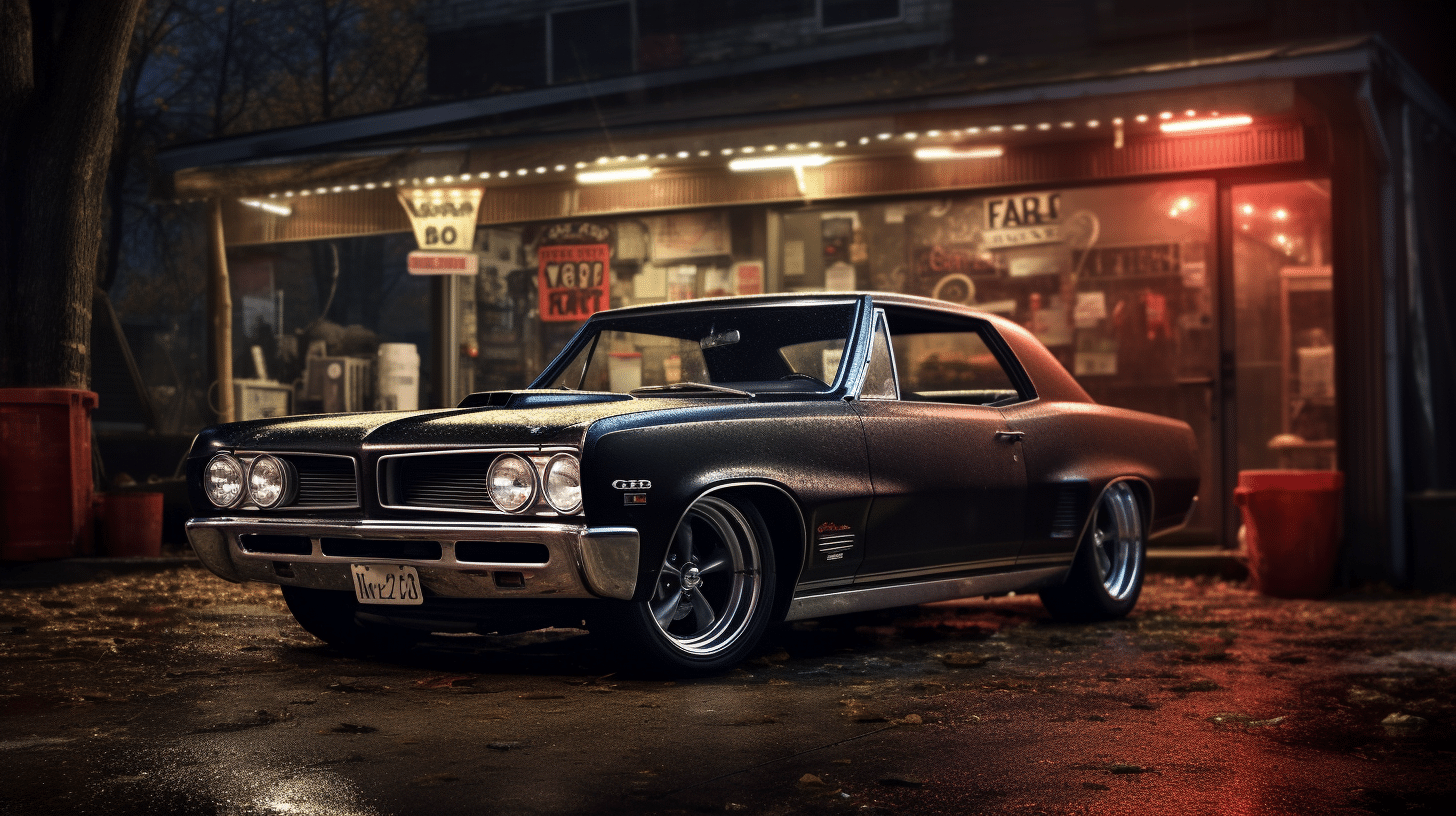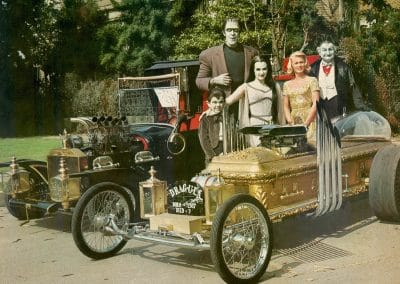First IntroducedThe 1964 Pontiac GTO is considered to be the first muscle car ever made. It was a car that was built for speed and power, and it quickly became a hit with car enthusiasts across America. The GTO was the brainchild of John DeLorean, who was the chief engineer at Pontiac at the time. He wanted to create a car that would appeal to younger drivers, and he succeeded beyond his wildest dreams.
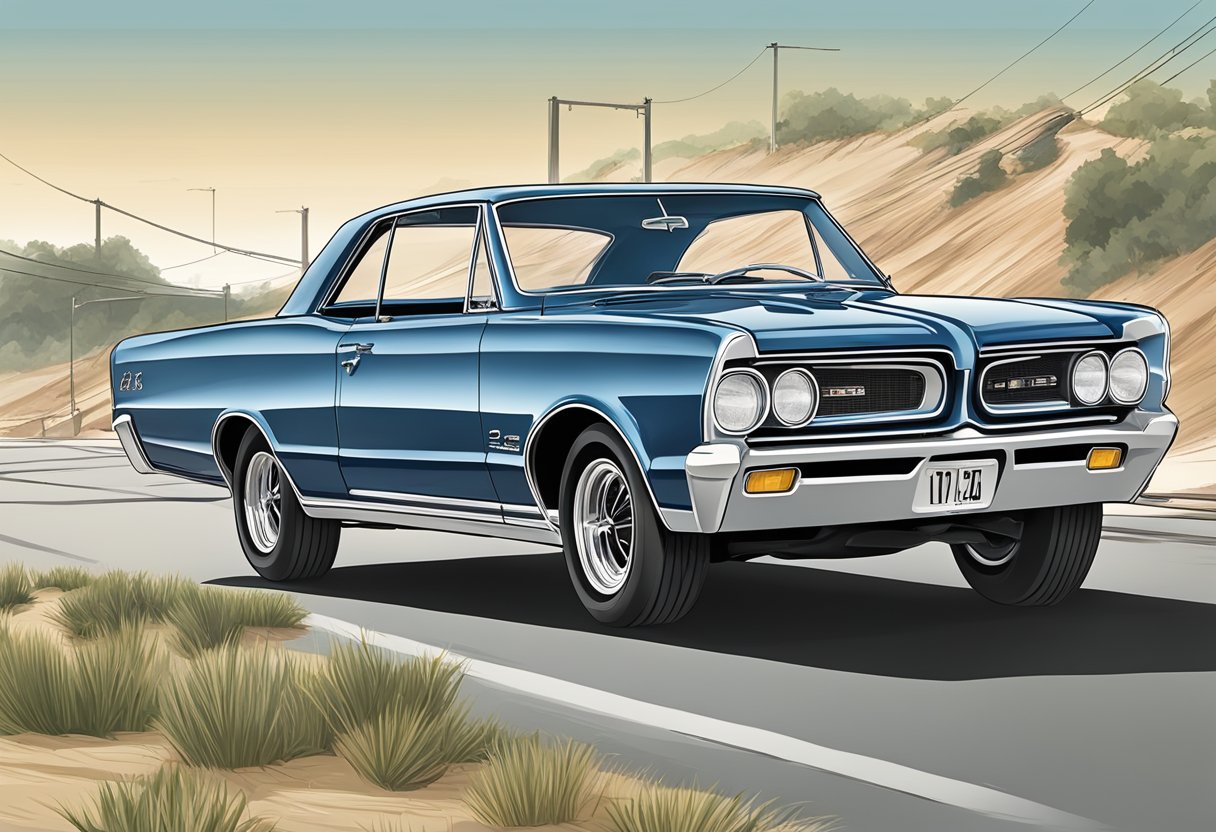
The GTO was based on the Pontiac Tempest, but it was far from a standard car. It was fitted with a powerful V8 engine that produced 325 horsepower, which was a lot of power for a car of its size. It also had a four-barrel carburetor, a three-speed manual transmission, and an upgraded suspension. The GTO was a car that was built for speed, and it quickly became a hit with car enthusiasts across America.
The GTO was an instant success, and it helped to kick-start the muscle car era. It was a car that was built for speed, and it quickly became a hit with car enthusiasts across America. The GTO was a car that was built for speed, and it quickly became a hit with car enthusiasts across America. Its success was due in part to its powerful engine, but it was also due to its attractive styling and its affordable price. The GTO was a car that was built for young drivers who wanted a car that was fast, stylish, and affordable.
The Origin of the 1964 Pontiac GTO
The Pontiac GTO was born in the mid-1960s and is widely considered to be the first muscle car. The story of the GTO began with John DeLorean, who was the chief engineer at Pontiac at the time. DeLorean and his team wanted to create a car that would appeal to younger buyers and offer more power than the average sedan.
Bill Collins, another engineer at Pontiac, was instrumental in the development of the GTO. Collins suggested that they take the Pontiac Tempest, a compact car, and add a powerful V8 engine to it. The result was the GTO option package, which was first introduced in 1964.
The GTO option package included a 389-cubic-inch V8 engine that was capable of producing 325 horsepower. The car’s aggressive styling, paired with its impressive power, made it an instant hit. The GTO was also relatively affordable, with a base price of $3,200.
Interestingly, the GTO was created as a loophole in General Motors’ policy against putting large engines in mid-size cars. The GTO was technically an option package for the Tempest, which allowed Pontiac to get around the policy.
First Introduced
The GTO was first introduced to the public at the Detroit Auto Show in 1964. It quickly became a popular choice among car enthusiasts and helped to usher in the era of the muscle car. The GTO was produced until 1974 and went through several design changes during its lifespan.
The GTO was designed and developed at Pontiac’s headquarters in Milford, Michigan. The car was named after the Ferrari 250 GTO, which was a high-performance sports car that was popular at the time.
Design and Styling
The 1964 Pontiac GTO was praised for its classic design and unique styling, which set the standard for the muscle car era that followed. The GTO was available in three different body styles: a hardtop coupe, a two-door coupe, and a convertible.
One of the most distinctive design features of the GTO was its hood scoops, which were functional and helped to cool the engine. These hood scoops were a hallmark of the GTO and became a defining feature of muscle cars in general.
The GTO was also adorned with GTO badges on the front fenders, grille, and trunk lid. These badges were a symbol of the car’s performance and helped to distinguish it from other Pontiac models.
Hardtop Coupe
The hardtop coupe was the most popular body style, with over 32,000 units sold in 1964. This body style featured a sleek roofline and no B-pillar, which gave the car a sporty and elegant look.
The two-door coupe was similar in design to the hardtop coupe but featured a fixed roof and a B-pillar. This body style was slightly more practical than the hardtop coupe but still had a sporty and aggressive look.
Finally, the convertible was the rarest body style, with only 7,000 units sold in 1964. This body style featured a power-operated convertible top that could be lowered or raised at the touch of a button.
The design of the 1964 Pontiac GTO was influenced by the GTO concept car, which was introduced in 1963. The concept car featured a unique design with a split grille and a long hood that extended over the front wheels. Many of these design elements were carried over to the production GTO.
The design and styling of the 1964 Pontiac GTO helped to establish it as a true icon of the muscle car era. Its classic design and unique styling continue to inspire car enthusiasts to this day.
Engine and Performance
The 1964 Pontiac GTO was equipped with a powerful V8 engine that set it apart from other cars of its time. The GTO’s standard engine was a 389 cubic inch V8 that produced 325 horsepower at 4800 RPM. This high-performance engine was paired with a four-barrel carburetor, which helped to improve its fuel efficiency.
For those looking for even more power, the GTO was also available with a Tri-Power engine option. This engine featured three two-barrel carburetors and was capable of producing up to 348 bhp. The Tri-Powered 389 CID V8 engine was available in both a four-speed manual and a three-speed manual transmission.
In 1964, the GTO was also available with a Ram Air IV option. This option included a high-performance camshaft, cylinder heads, and exhaust manifolds, which helped to increase the engine’s horsepower output to 370.
The GTO’s transmission options included a two-speed automatic, a three-speed manual, and a four-speed manual transmission. The four-speed manual transmission was the most popular option among buyers due to its ability to handle the engine’s high power output.
Sales and Marketing
The 1964 Pontiac GTO was a commercial success, and it became an instant hit with car enthusiasts and the youth market. The car’s sales figures were impressive, with over 32,000 units sold in the first year alone. The GTO was marketed as an affordable, high-performance vehicle that was perfect for the American-made muscle car era.
Pontiac’s advertising campaign for the GTO was designed to appeal to young buyers. The company used slogans such as “The Great One” and “The Judge” to promote the car’s performance and style. The GTO was also featured in popular car magazines, such as Car and Driver and Motor Trend, which helped to increase its visibility and popularity.
Pontiac’s marketing strategy for the GTO was successful, and the car became a symbol of the American muscle car era. The GTO’s popularity continued to grow, and Pontiac continued to improve the car’s performance and styling. The GTO was restyled in 1965, and it received a new hood scoop and stacked quad headlamps. The car also received a new rear fascia, which helped to improve its aerodynamics.
Influence and Legacy
The Pontiac GTO emerged as a game-changer, challenging industry norms and setting the stage for the horsepower wars of the 1960s and 1970s. Its influence on muscle car culture and its enduring legacy make the Pontiac GTO a fascinating subject to explore.
The GTO was the first car to coin the term “muscle car” and is often credited with starting the muscle car era. It was designed to appeal to younger drivers who wanted a high-performance car that was both affordable and stylish. The GTO was an instant hit, selling over 32,000 units in its first year of production.
The success of the GTO inspired other American car manufacturers to create their own muscle cars, such as the Ford Mustang and the Chevrolet Camaro. The muscle car era was born, and it would go on to define American car culture for decades to come.
The GTO’s influence wasn’t just limited to American cars, either. The Ferrari 250 GTO, which stands for Gran Turismo Omologato, was named after the GTO and was also designed to be a high-performance car that could be driven on the street. The GTO’s influence can be seen in many new vehicles today, which continue to prioritize high-performance and speed.
Special Features
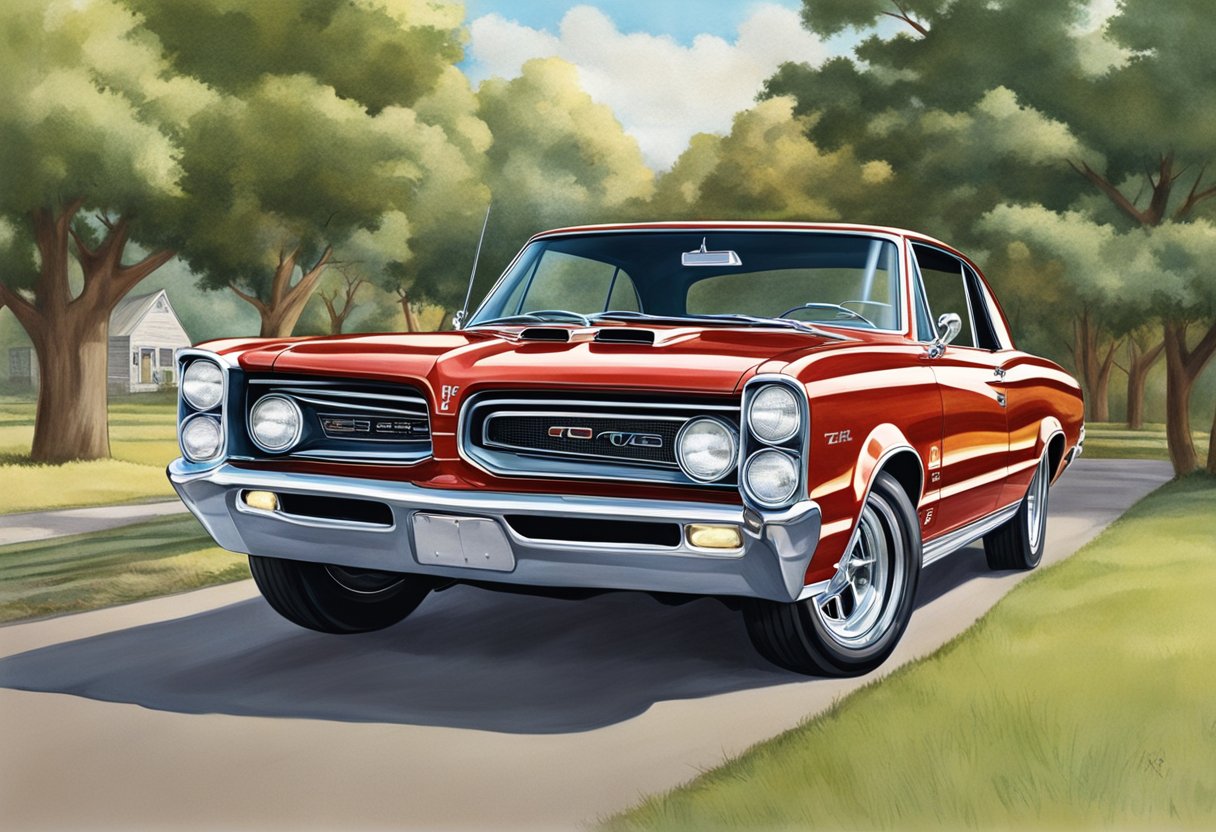
The 1964 Pontiac GTO is considered the first American muscle car due to its high-performance features and powerful engine. The GTO package included several special features that set it apart from other cars of its time.
One of the most notable features of the GTO was the dual exhaust system, which allowed for better airflow and improved engine performance. The car also came with a Hurst shifter, which provided precise and quick shifting for the driver.
The GTO’s exterior design was also unique, with dual hood scoops and wider wheels that gave it a more aggressive stance. The car was available with redline tires, which were designed to provide better traction and handling.
Under the hood, the GTO came equipped with a high-performance powertrain that included a 389 CID V8 engine, chrome valve covers, and a chrome air cleaner. The engine had a high compression ratio and was available with a ram air induction system that further improved performance.
The GTO also had an upgraded suspension system that included heavy-duty springs and shocks, as well as a limited-slip differential that provided better traction and handling. The car was available with a tachometer, which allowed the driver to monitor engine RPMs.
The GTO was a standalone model that was available in both hardtop and convertible body styles. It was offered as a trim level of the Pontiac Tempest LeMans, but was factory-built as a separate model.
Later models of the GTO, such as the 2004 LS1 V8 and the 2005 LS2 V8, were also available with redline US Royal Tiger Paw tires. The GTO remained a front-engine, rear-wheel-drive car throughout its production run.
The Role of Key Individuals
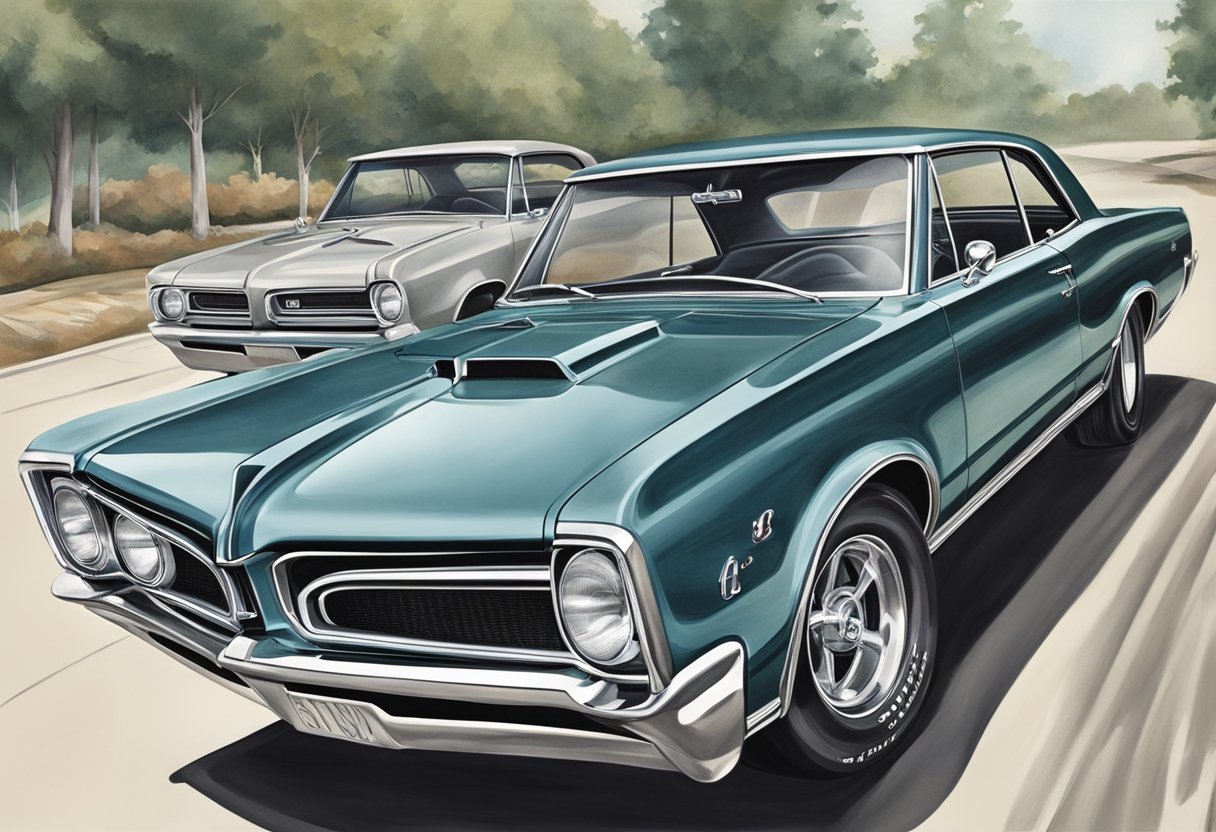
The creation of the 1964 Pontiac GTO muscle car was not a one-person job. It was the result of the hard work and dedication of a group of individuals who were determined to create a car that would stand out from the rest.
One of the key individuals in the development of the GTO was Russ Gee, who was the assistant chief engineer at Pontiac at the time. Gee was instrumental in convincing the other engineers and executives at Pontiac that they needed to create a car that would appeal to the younger generation. He believed that they needed to create a car that was not only fast but also affordable.
Jim Wangers
Another important figure in the development of the GTO was Jim Wangers, who was the marketing manager for Pontiac at the time. Wangers was responsible for promoting the GTO and making it a household name. He worked closely with Gee and the other engineers to ensure that the GTO was marketed as a car that was not only fast but also fun to drive.
Finally, Pete Estes, who was the general manager of Pontiac at the time, played a crucial role in the development of the GTO. Estes was responsible for making the final decision to go ahead with the project and for ensuring that it was completed on time and within budget. He was also responsible for ensuring that the GTO was marketed effectively and that it was a success.
GTO in Motorsport
The Pontiac GTO was a popular car in motorsport during its heyday. Its powerful V8 engine and sleek design made it a favorite among drivers and fans alike. The GTO was so successful in motorsport that it helped to establish the muscle car as a legitimate racing category.
One of the most famous GTO drivers was Jim Wangers, who worked for Pontiac’s advertising agency and helped to promote the GTO as a performance car. Wangers was also a successful drag racer, and he used his skills to help develop the GTO’s racing capabilities. He even drove a GTO to victory in the 1964 Daytona 500, one of the most prestigious races in the NASCAR circuit.
Another famous GTO driver was Ronnie Sox, who drove a GTO to victory in the 1967 NHRA Winter Nationals. Sox was one of the most successful drag racers of his time, and his victories helped to cement the GTO’s reputation as a top-performing muscle car.
The GTO also had success in other forms of motorsport, including road racing and endurance racing. In 1964, a GTO won its class in the 12 Hours of Sebring, one of the most grueling endurance races in the world. The car was driven by Phil Hill, a former Formula One world champion, and Pedro Rodriguez, a talented Mexican driver.
International Influence
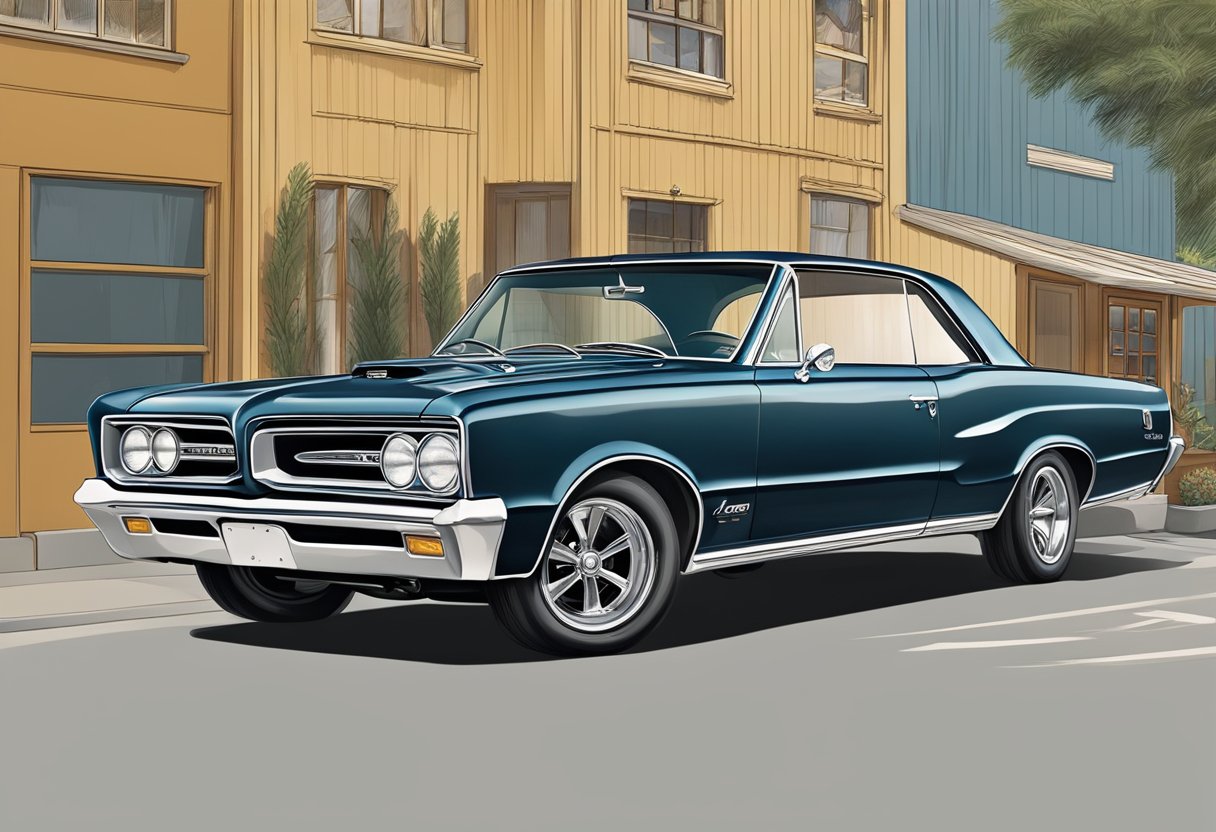
The 1964 Pontiac GTO muscle car had an international influence. Its design and engineering inspiring similar models in other countries. General Motors, the parent company of Pontiac, had subsidiaries in different countries. They adapted the GTO concept to suit their local markets.
One of the most notable examples is Holden, the Australian subsidiary of General Motors. Holden produced a range of muscle cars based on the GTO, including the Holden Monaro. The Monaro was first introduced in 1968 and was based on the second-generation GTO. It was an instant success and became one of the most iconic muscle cars in Australia.
Holden continued to produce Monaros until 2005, and the car remains a highly sought-after collector’s item. The Monaro was also exported to other countries, including the United Kingdom, where it was sold as the Vauxhall Monaro.
The success of the GTO and its derivatives inspired other car manufacturers to produce their own muscle cars. Ford introduced the Mustang in 1964, and Chevrolet launched the Camaro in 1966. These cars were direct competitors to the GTO. They helped to establish the muscle car genre as a distinct category of automobiles.
The 1964 Pontiac GTO muscle car had a significant impact on the automotive industry. Its success inspired other car manufacturers to produce their own muscle cars. The GTO remains an iconic symbol of the muscle car era.

